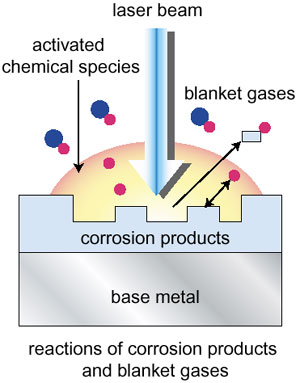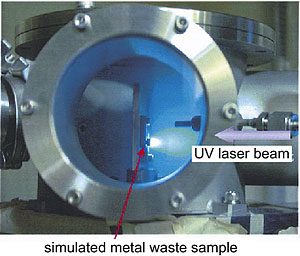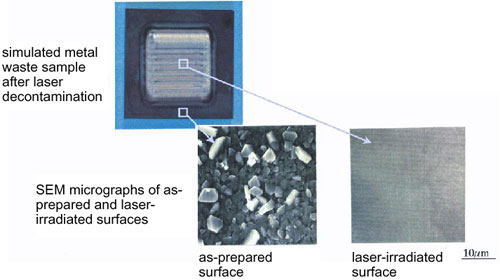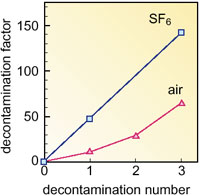Following the removal of radioactive contaminants, the recycling of large quantities of metal waste arising from decommissioning of nuclear facilities is planned to conserve metal resources effectively. Since radioactive contaminants are usually deposited in a thin surface oxide layer on the base metal, chemical decontamination techniques have been applied to remove the corrosion product layer. Several issues associated with these conventional decontamination techniques have grown in importance; improvements in decontamination efficiency are needed and reductions in the amounts of radioactive secondary waste, such as liquid waste are needed.
To address these issues, we investigated various laser decontamination techniques and developed a distinctive decontamination technique using laser-induced chemical reactions of the corrosion products with gases in a blanket atmosphere. In this technique, the radioactive contaminants are removed from the base metal by the reactions of radioactive corrosion products with blanketing gases under irradiation by a high-power UV pulsed laser (Fig. 11-1). These blanketing gases are stable and easy to deal with at room temperature.
Irradiation tests were performed using various blanketing gases. The results indicated that irradiation in an SF6 blanket atmosphere provided excellent decontami-nation results (Figs. 11-3 and 11-4). This is because corrosion products react with F atoms, dissociated by laser irradiation, to produce volatile metallic compounds (Fig. 11-2).
If this technique can be applied to actual use, the radioactivity on metal waste arising from the decommissioning of nuclear facilities will effectively be reduced. This will enable us to increase the quantity of metal resources available for recycling. |




